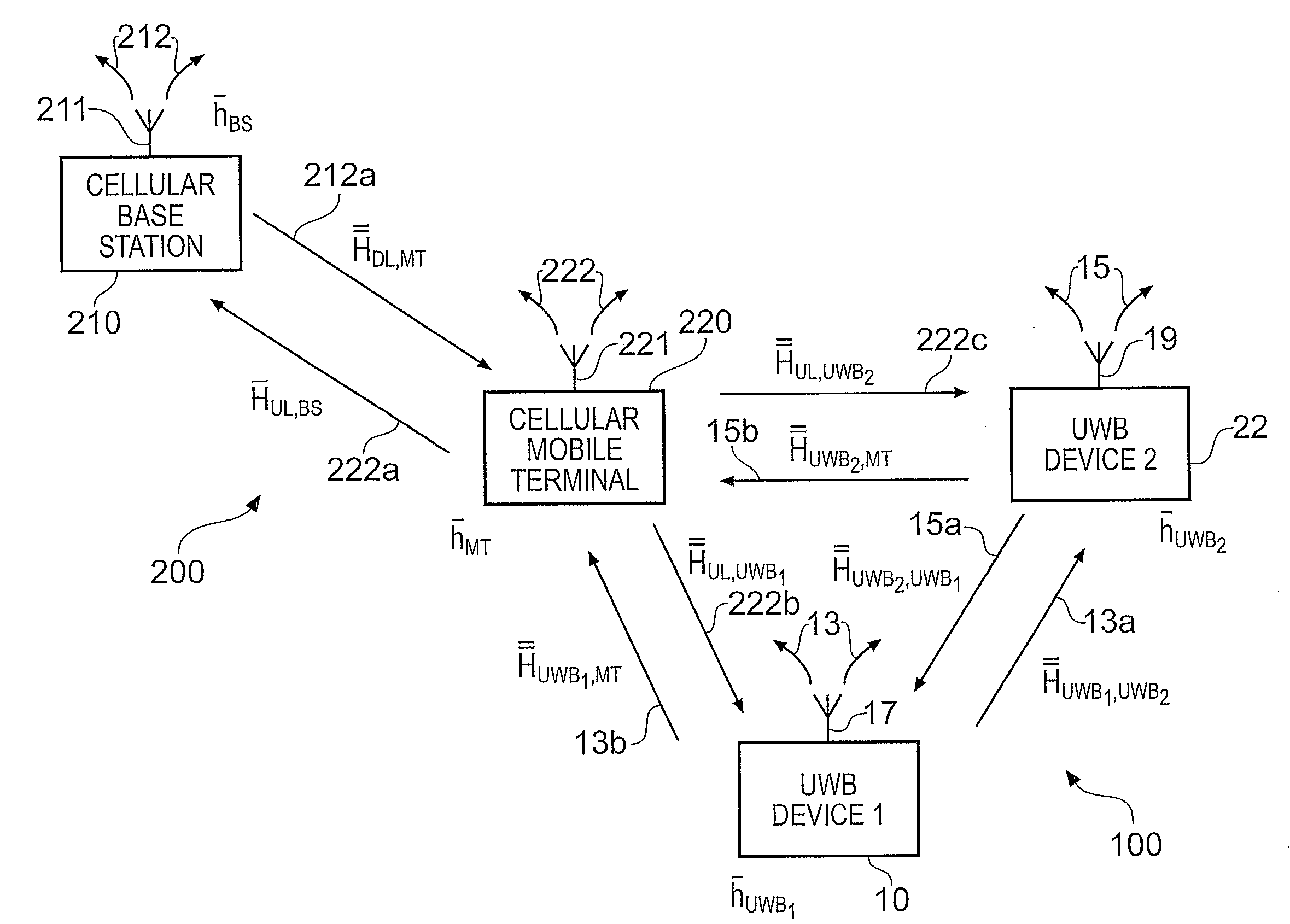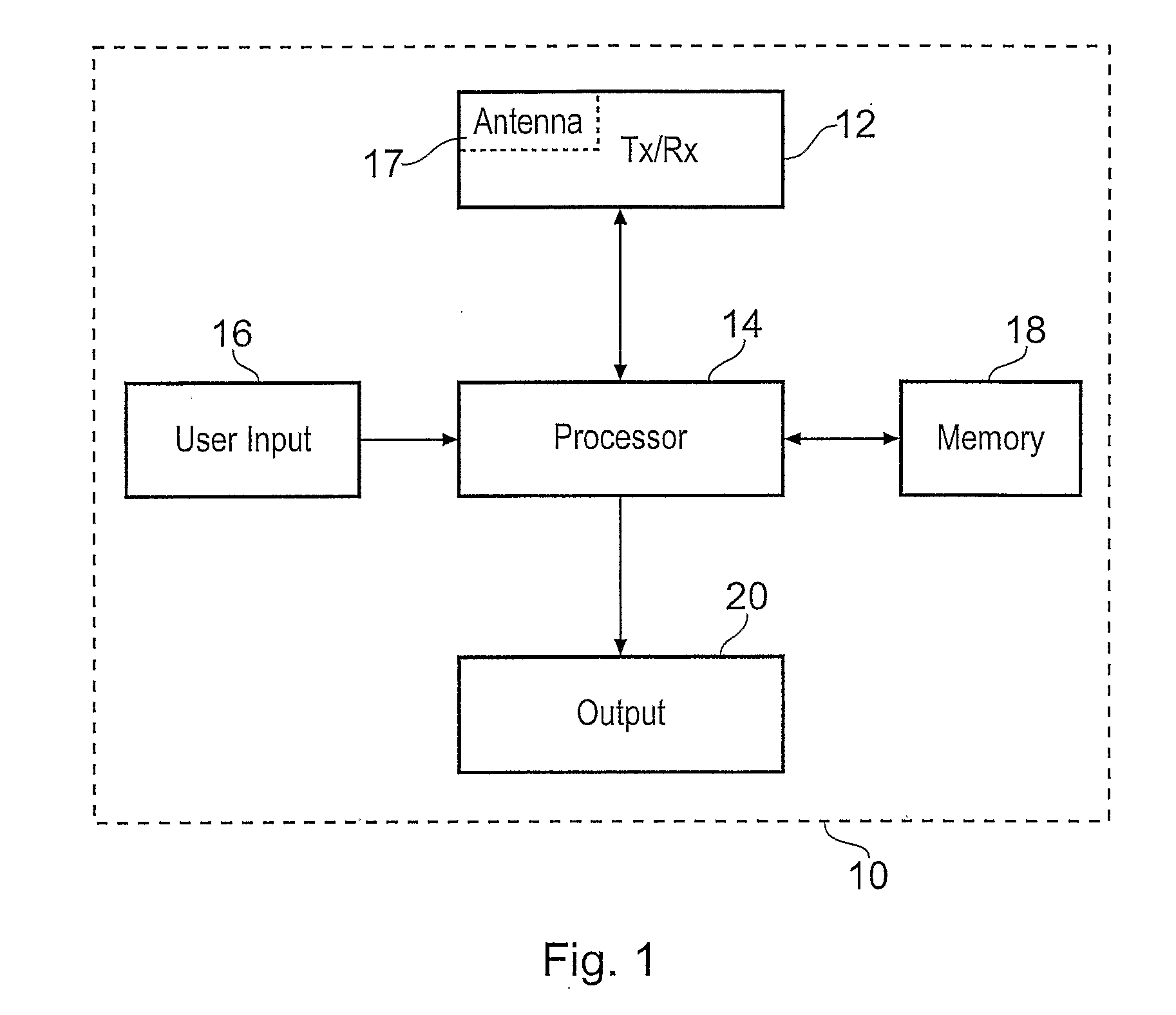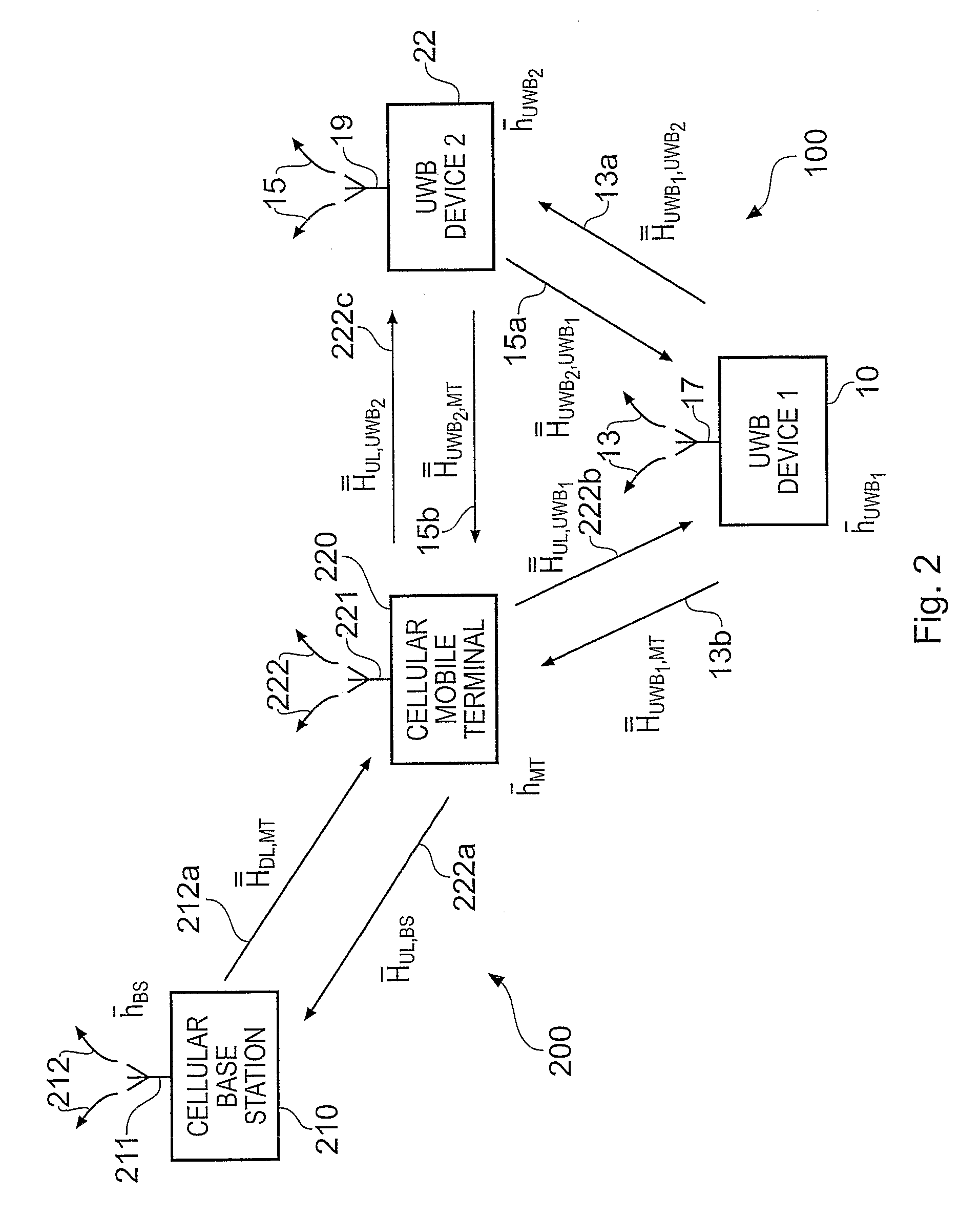Low Power Radio Device With Reduced Interference
a radio device and low power technology, applied in multiplex communication, polarisation/directional diversity, high-level techniques, etc., can solve problems such as interference to mobile terminals, uwb devices may cause interference at 4g mobile terminals, etc., and achieve the effect of amplitude of radio signals
- Summary
- Abstract
- Description
- Claims
- Application Information
AI Technical Summary
Benefits of technology
Problems solved by technology
Method used
Image
Examples
Embodiment Construction
[0023]The Figures illustrate a low power radio device 10, operable in a first radio system 100, comprising: a detector 12, 14 for detecting the polarization of an antenna 221 of a further radio device 220, operating in a further radio system 200, different to the first radio system 100; and a transmitter 12 for controlling the polarization of a transmitted radio signal 13 in dependence on the detected polarization.
[0024]FIG. 1 is a schematic illustration of a UWB device 10. The UWB device 10 may be hand portable. The UWB device comprises a radio frequency transceiver 12, a processor 14, a user input 16, a memory 18 and an output 20.
[0025]The transceiver 12 comprises a transmitter, a receiver and an antenna 17 and is operable to transmit and receive UWB radio frequency signals. The processor 14 is connected to receive an input from the transceiver 12 and the user input 16 and to read from the memory 18, and to provide an output to the transceiver 12 and the output 20, and to write to...
PUM
 Login to View More
Login to View More Abstract
Description
Claims
Application Information
 Login to View More
Login to View More - R&D
- Intellectual Property
- Life Sciences
- Materials
- Tech Scout
- Unparalleled Data Quality
- Higher Quality Content
- 60% Fewer Hallucinations
Browse by: Latest US Patents, China's latest patents, Technical Efficacy Thesaurus, Application Domain, Technology Topic, Popular Technical Reports.
© 2025 PatSnap. All rights reserved.Legal|Privacy policy|Modern Slavery Act Transparency Statement|Sitemap|About US| Contact US: help@patsnap.com



